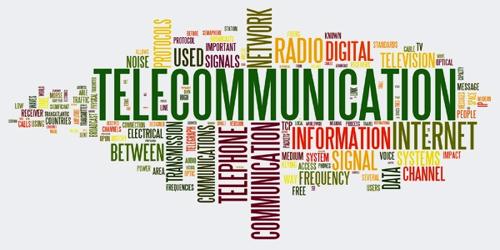Telecommunication is the sending of information in any form (example – Voice, data, tenet, and image) from places to another using electronic or light emitting media. It is a universal term that is used for a vast range of information-transmitting technologies such as mobile phones, landlines, VoIP and broadcast networks. Today, telecommunications are used to organize more or less remote computer systems into telecommunications networks.
Types of telecommunication network: There are many different types of telecommunication networks. Some are given below –
- Wide Area Networks (WANs) –
Telecommunication networks covering a large geographic area are called wide area networks (WANs). Networks that cover a large city or metropolitan area can also be included in this category. For example, WANs are used by many multinational companies to transmit and receive information among their employees, customer, suppliers, and other organizations across cities, regions, countries, and the world.
- Local Area Networks (LANs)-
Local area networks (LANs) connect computers and other information processing devices within a limited physical area, such as an office, a classroom, a building, manufacturing plant, or other work sites. LANs have become commonplace in many organizations for providing .telecommunications network capabilities that link end user in the office, departments, and other workgroups.
- Internetworks –
Most local area networks are eventually, connected to other LANs in wide area networks. These interconnected networks are generically called internetworks, of which the internet in the largest example.
- Intranets and extranets –
Intranets are designed to be open, but secure internal networks whose Web browsing software provides easy point-and-click access by an end user to multimedia information on internal Web sites. Extranets are networks that link some of the intranet resources of a company with other organizations and individuals.
- Client/server networks –
Client/server networks have become the predominant information architecture of enterprise-wide computing. Computing power is distributed and interconnected throughout many organizations by networked computer systems that take the form of client/server networks. In client/server network, end-user PC or NC workstations are the clients.
- Inter-organizational networks –
Many of the applications of telecommunications we have just mentioned can be classified as inter-organizational networks. The Internet, extranets, and other networks may be used to link a company’s headquarters and other locations to the networks of it customers, suppliers, and other organizations.
















